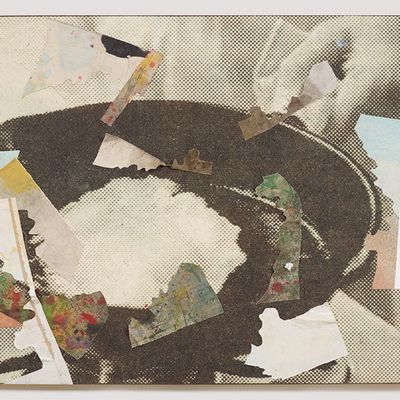
How does an early-aughts quasi-slacker art star making millions ÔÇö one who was a big voice, back then, in the hip new academy of derivative artists painting gritty images based on stock ideas about mass culture and appropriation ÔÇö transition to being just another 35-year-old painter trying to make good work without hype and buzz? The answer shows up in Nate LowmanÔÇÖs new show at Maccarone. In this same gallery, in 2008, Lowman and his fellow art-star buddy Dan Colen created a cheeky self-conscious mash of Warhol, Richard Prince, Cady Noland, and a few other usual suspects, giving us a smashed-up 1971 Jaguar, paintings on beach towels, pictures of crack pipes, and the like. Collectors ate it up. Four years later, Lowman did a huge show for the collector and media mogul Peter Brandt at his Greenwich space that included a zillion paintings of Richard Prince-y pictures of a de Kooning Woman painting, riots in Cancun, women in bikinis, bullet holes, a figure falling out of the World Trade Center, and other scenes of neo-punk sex and death.
No more. In this new show, Lowman eschews that histrionic, abject subject matter and also jettisons the semi-precise hand-painted dotting, descended from Sigmar Polke, that made his earlier work handsome but wanting. (ItÔÇÖs a good step, but he doesnÔÇÖt make it decisively: He falls back on two dotted Polke-like paintings, one of eggs in a skillet, another a yawner of some rocks in water.) Lowman has happily retained maybe his greatest painterly strength: his visual ability to zero in on one solid thing or shape, isolate it from the world, and present it as an autonomous object. Rather than depicting bullet holes and (my favorites) greatly enlarged air fresheners, heÔÇÖs channeling his inner decorator and Matisse of the paper-cut outs. He combines this with the next-to-nothingness of Richard TuttleÔÇÖs almost-abstractions and the flat, shaped monochromes of Robert Mangold.
All this is a step. Not a big one. Here we get medium-size shaped paintings of what looks like a couple of leaves, a pinkish upside-down heart, maybe a flower, an abstract lozenge, and a faded, translucent green painting of Wisconsin. This last is the one that gives me hope and makes me remember how much I liked the air freshenerÔÇÖs banality, forcefulness, and specificity. In Green Wisconsin,┬áIÔÇÖm thrown a curve ÔÇö of knowing what IÔÇÖm looking at but not knowing why ÔÇö and am left wondering why this is a painting at all, and not sculpture or a wall decoration. ThatÔÇÖs a nice, quiet internal space to spend time in. ItÔÇÖs not like Lowman has come looking for America and is investigating the shapes of the states or making statements about them. At least this painting produces an enticing, lax vacuum that generates ambiguity and uncertainty. Enough to make me stay tuned to see what Lowman pledges allegiance to next.

